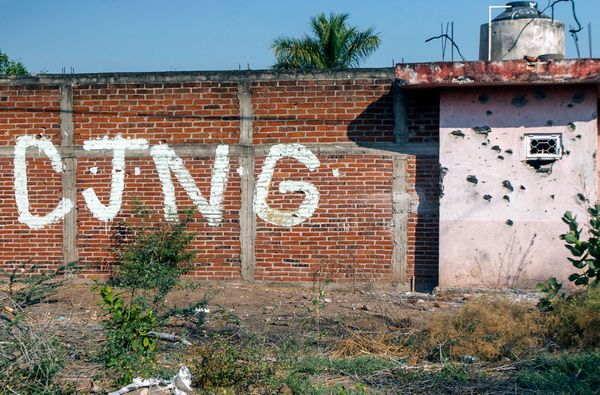EXPLAINER
The story so far: A month after setting sail on the Ganga from Patna, the MV Lal Bahadur Shastri carrying 200 metric tonnes of food grains for the Food Corporation of India (FCI), docked at Guwahati’s Pandu port on the southern bank of the Brahmaputra on March 6. The occasion is believed to have taken inland water transport, on two of India’s largest river systems, to the future.
Why is a Ganga-Brahmaputra cargo vessel in focus?
There is nothing unusual about a cargo vessel setting sail from or docking at any river port. But a host of VIPs lined up to receive MV Lal Bahadur Shastri, a cargo vessel operated by the IWAI (Inland Waterways Authority of India), at Guwahati’s Pandu port on March 6. They included Union Minister of Ports, Shipping and Waterways, Sarbananda Sonowal, Assam Chief Minister Himanta Biswa Sarma, Guwahati MP Queen Oja and IWAI chairperson Sanjay Bandopadhyay.
The vessel had on February 5 started sailing from Patna on National Waterway-1 (NW1, river Ganga).
It passed through Bhagalpur, Manihari, Sahibganj, Farakka, Tribeni, Kolkata, Haldia, Hemnagar in India, Khulna, Narayanganj, Sirajganj and Chilmari in Bangladesh and again to India on National Waterway-2 (NW2, river Brahmaputra) through Dhubri and Jogighopa covering 2,350 km. The docking of the vessel carrying 200 MT of food grains for the FCI has rekindled hope for the inland water transport system which the landlocked northeast depended on heavily before India’s independence in 1947.
Is this the first such shipping of cargo?
The shipping of cargo from Patna to Pandu via Bangladesh was FCI’s pilot project. A similar experiment was carried out in 2018 when two 1,000-tonne barges carrying 1,233 tonnes of bagged fly ash travelled 2,085 km from Bihar’s Kahalgaon to Pandu for more than a month. A private firm had procured the fly ash from the National Thermal Power Corporation’s plant in Bihar for use in its cement factories in Assam and Meghalaya. But the FCI cargo is expected to lead to regular services between NW1 and NW2 “heralding a new age of inland water transport” for the northeast. According to the IWAI, the process has already started with a 252 MT cargo destined for eastern Assam’s Numaligarh bio-refinery having reached central Assam’s Silghat from Haldia in West Bengal on February 15. Another vessel, MV Ram Prasad Bismil with two barges named Kalpana Chawla and APJ Abdul Kalam started its voyage from Haldia on February 17 and is expected to reach Pandu soon.
How would regular inland water service impact the northeast?
Around Independence, Assam’s per capita income was the highest in the country primarily because of access for its tea, timber, coal and oil industries to seaports on the Bay of Bengal via the Brahmaputra and the Barak River (southern Assam) systems. Ferry services continued sporadically after 1947 but stopped after the 1965 war with Pakistan, as Bangladesh used to be East Pakistan then.
The scenario changed after the river routes were cut off and rail and road through the “Chicken’s Neck”, a narrow strip in West Bengal, became costlier alternatives. “The start of cargo movement through the Indo-Bangladesh Protocol (IBP) route is going to provide the business community a viable, economic and ecological alternative. Seamless cargo transportation has been a necessity for the northeast,” Mr Sonowal said.
He attributed the rejuvenation of the historical trade routes via Bangladesh to the PM Gati Shakti initiative envisaged to slowly convert the northeast into a connectivity hub and ramp up the swift movement of cargo on the Brahmaputra, which meets the Ganga in Bangladesh. These rivers are called Jamuna and Padma in that country.
How did the water cargo service through Bangladesh come about?
The resumption of cargo transport service through the waterways in Bangladesh has come at a cost since the Protocol on Inland Water Transit and Trade was signed between the two countries.
India has invested 80% of ₹305.84 crore to improve the navigability of the two stretches of the IBP (Indo-Bangladesh Protocol) routes — Sirajganj-Daikhowa and Ashuganj-Zakiganj in Bangladesh.
The seven-year dredging project on these two stretches till 2026 is expected to yield seamless navigation to the north-eastern region.
IWAI officials said the distance between NW1 and NW2 will reduce by almost 1,000 km once the IBP routes are cleared for navigation.
The Government has also undertaken the Jal Marg Vikas project with an investment of ₹4,600-crore to augment the capacity of NW1 for sustainable movement of vessels weighing up to 2,000 tonnes.
A few issues remain, though. Sailors who made the cargo trips possible have had difficulties steering clear of fishing nets and angry fishermen in Bangladesh.
These hiccups will get sorted out with time, officials say.







